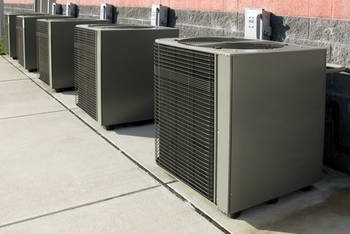Important HVAC Acronyms Explained

Are you in the market for an HVAC unit? If so, it is important that you select an energy efficient unit, which will cost less to operate and can easily pay back the extra initial cost you may incur several times over during their lifetimes. It is also critical that you understand the various acronyms associated with HVAC units so that you can decipher the tricky details involved in purchasing a quality unit. Let’s take a look at some acronyms you should become familiar with.
EER: Energy Efficiency Ratio
The Energy Efficiency Ratio (EER) is a measure of the amount of energy a unit uses. The EER is derived by measuring the amount of energy an air conditioner must use to cool a house on a 95-degree day. You will want to look for a unit that boasts a high EER since this means it is a more efficient unit. You should ultimately purchase a unit that has an EER of at least 11.
SEER: Seasonal Energy Efficiency Ratio
The Seasonal Energy Efficiency Ratio (SEER) is a more spread out measure compared to the EER. Unlike the EER, the SEER is a measure of cooling over an entire season as opposed to constant operation at 95-degrees. You should be on the lookout for an HVAC unit that features a high SEER since a higher SEER means a more efficient unit that uses less electricity.
AFUE: Annual Fuel Utilization Efficiency
The Annual Fuel Utilization Efficiency (AFUE) is the most commonly used measure of a boiler or furnace’s heating efficiency. The AFUE measures the amount of energy put into an HVAC unit that is actually converted to usable warmth. You should look for a unit that features an AFUE of at least 80 percent. If you are currently using an old system with a low AFUE, you stand to save a good deal of money on your utility bills by making the switch.
COP: Coefficient Of Energy Performance
The Coefficient of Energy Performance (COP) measures the overall efficiency of a heat pump or air conditioner. The COP is determined by dividing the temperature of the heat reservoir of the unit by the amount of energy used. Knowing the COP of an unit can give you a good idea of its general efficiency. The higher the COP, the more efficient the unit.
BTU: British Thermal Units
British Thermal Units (BTU’s) is a raw measure of the power of a heating or cooling unit. Bigger is not always better when it comes to BTU’s, as a large and powerful HVAC may be an unnecessary energy drain that raises your utility bills. It is very important that you roughly determine the amount of BTUs your house needs so that you can purchase an appropriate unit.
You can now hold your own when you engage in an HVAC discussion with a salesperson, as you have gained familiarity with these important acronyms. By purchasing an efficient unit, you can save a ton of money over time.